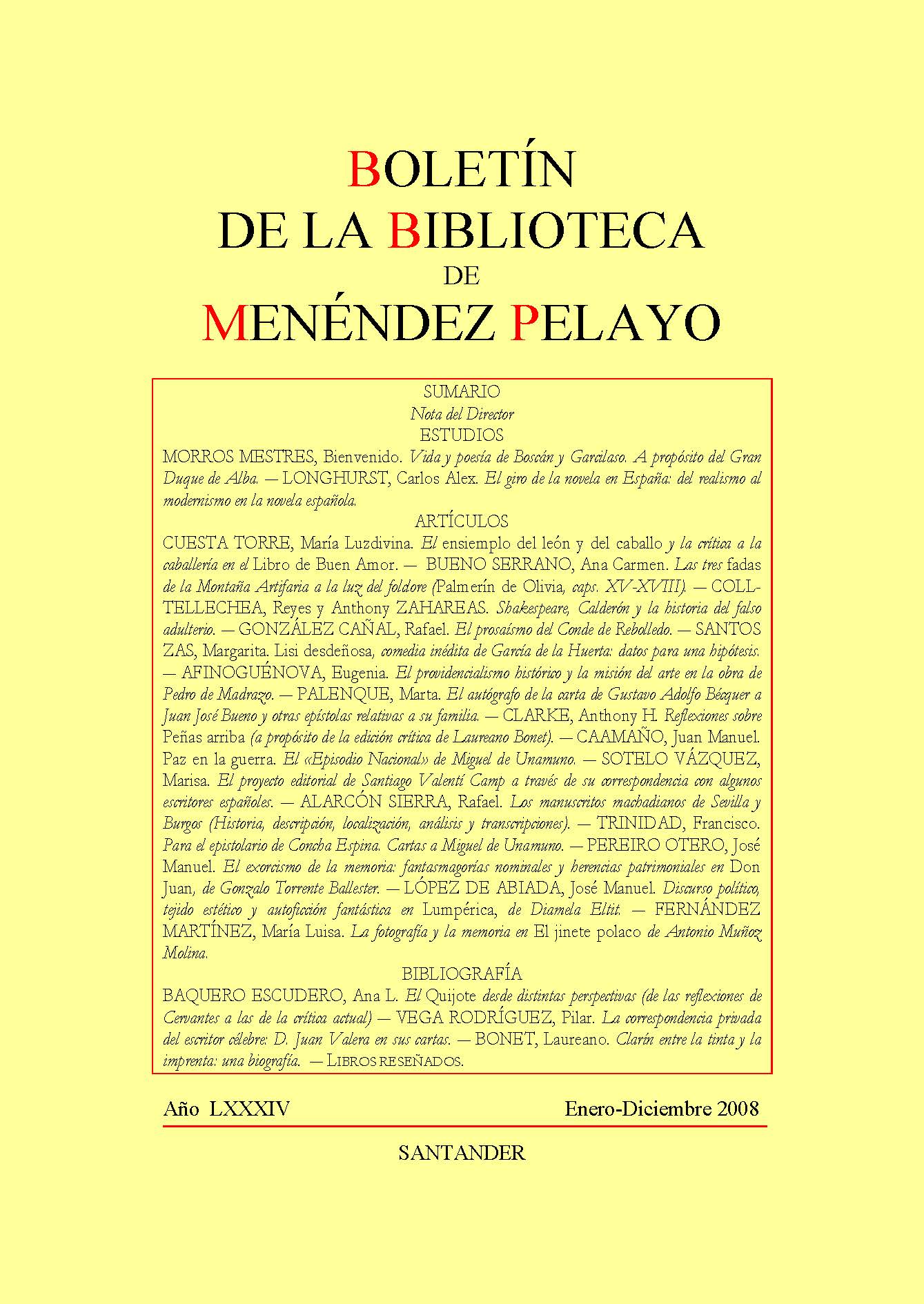Political Discourse, Aesthetic Tissue and Fantastic Self-Action in Lumpérica, by Diamela Eltit
DOI:
https://doi.org/10.55422/bbmp.425Keywords:
Homobiographic testimony, Fantastic autobiofiction, Iconography, Compromise, Gender transgression, Gender studiesAbstract
Lumpérica (1983), the first novel by the Chilean storyteller Diamela Eltit (1949), confirms the author as one of the most important figures of the Latin America narrative during the eighties. Among the values of the novel, its function as a pioneer and precocious work stands out in the extensive narrative work of her generation. However, the main feature of her writing is that it far exceeds the narrow boundaries of the literature that raises against the dictatorial regime. The nature of this literature was marked and conditioned by an inflexible aesthetics as well as a hackneyed and an anachronistic testimonial poetics. Furthermore, the concepts of the Genette’s model are not enough to define the bonds and commitment between the author and the story, which develops itself in the limits of the autobiography, although it does not observe the norms of the autobiographical genre. Under those circumstances, it is necessary either to coin a new term (―homobiographic‖, for instance) to refer to the degree of authorial presence in the novel or to resort to a recent label created by Alberca: ―fantastic autobiofiction‖.
Downloads
Publication Facts
Reviewer profiles N/A
Author statements
Indexed in
- Academic society
- Sociedad Menéndez Pelayo
- Publisher
- Sociedad Menéndez Pelayo
Global Statistics ℹ️
|
165
Views
|
51
Downloads
|
|
216
Total
|
|
References
Alberca, Manuel (2007): El pacto ambiguo. De la novela autobiográfica a la autoficción. Madrid: Biblioteca Nueva.
Avelar, Idelber (2000): Alegorías de la derrota: La ficción postdictatorial y el trabajo del duelo. Santiago de Chile: Cuarto Propio. Colonna, Vicent (2004): Autofiction & autres mythomanies littéraires
Auch: Tristam. Genette, Gérard (1993): Ficción y dicción. Barcelona: Lumen. Green, Mary (2007): Diamela Eltit, Reading the mother. London: Tamesis.
Klein, Eva (2003): «La (auto)representación en ruinas: Lumpérica, de Diamela Eltit». En: Revista de la Casa de las Américas. p. 230. (http://www.letras.s5.com/eltitcuba0808035.htm)
Eltit, Diamela (1983): Lumpérica. Santiago de Chile: Las Ediciones del Ornitorrinco.
―――(1993): «Errante, Errática». En: Lértora, Juan Carlos: Una poética de literatura menor: la narrativa de Diamela Eltit. Santiago de Chile: Cuarto Propio. pp. 17-25.
―――(1998): Lumpérica. Santiago de Chile: Seix Barral. Ortega, Julio (1990): «Resistencia y sujeto femenino: entrevista con Diamela Eltit». En: La Torre, p.14.
Richard, Nelly (1993): «Tres Funciones de Escritura: Desconstrucción, Simulación, Hibridación». En: Lértora, Juan Carlos: Una poética de literatura menor: la narrativa de Diamela Eltit. Santiago de Chile: Cuarto Propio, pp. 37-51.
―――(1998): La insubordinación de los signos. Santiago de Chile: Cuarto Propio.
―――(2001): Residuos y Metáforas. (Ensayos de crítica cultural sobre el Chile de la Transición). Santiago de Chile: Cuarto Propio.
Tafra S., Silvia (1998): Diamela Eltit: el rito de pasaje como estrategia textual. Santiago de Chile: RIL.
Downloads
Published
How to Cite
Issue
Section
License

This work is licensed under a Creative Commons Attribution-NonCommercial 4.0 International License.







